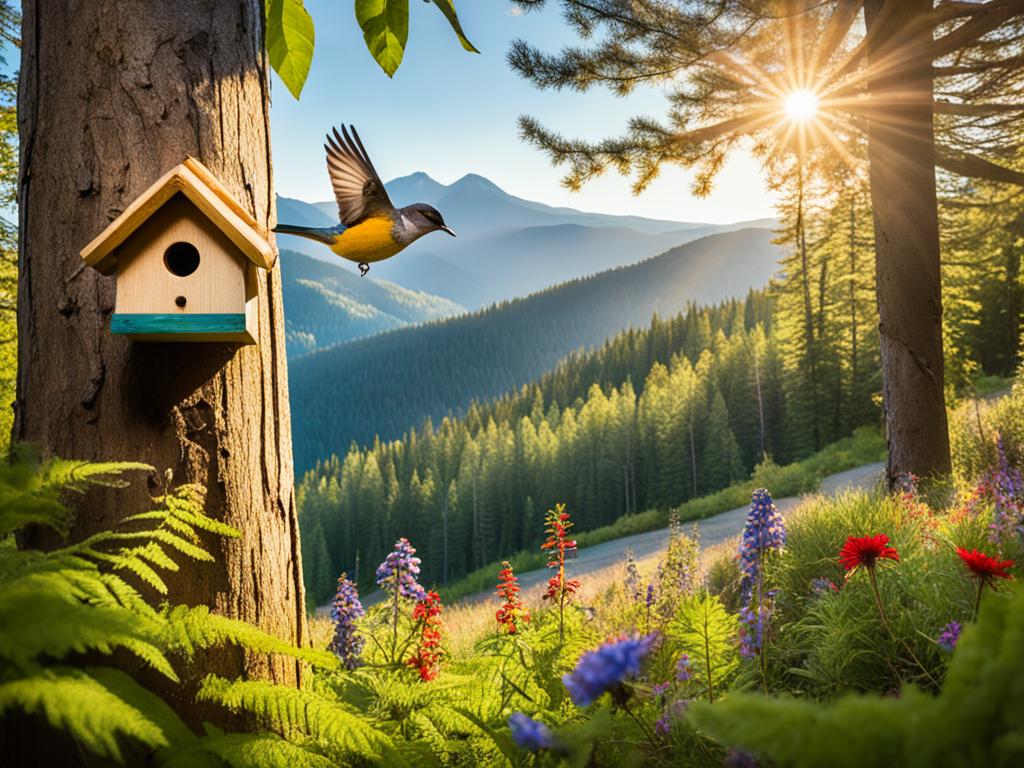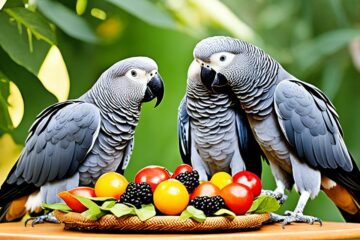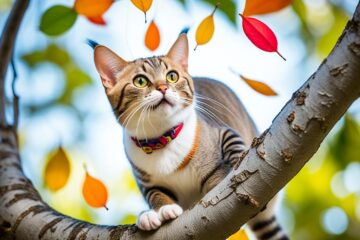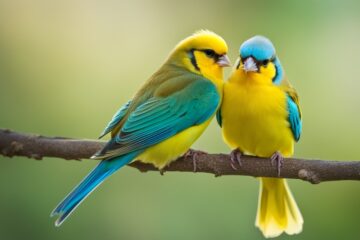Imagine waking up to the melodious sound of birds chirping outside your window. The sweet harmony of their songs fills the air, creating a symphony of nature that brings joy and tranquility to your soul. For many, this idyllic scene is the epitome of a peaceful morning, moments that nurture the spirit and connect us to the wonders of our natural world.
Birds, with their vibrant colors and enchanting melodies, have the power to captivate our hearts and inspire a sense of wonder. They are not just creatures of the sky, but guardians of our ecosystem, playing a vital role in pollination, seed dispersal, and insect control. Unfortunately, the delicate balance between birds and their habitats is increasingly threatened.
In an era of rapid urbanization and habitat destruction, it is our responsibility to nurture nature and protect our native songbirds. By understanding their needs, providing care and support, we can make a significant difference in their survival. This guide aims to empower you with the knowledge and tools to raise and release native songbirds, contributing to their conservation efforts and ensuring their melodies continue to grace our world.
Key Takeaways:
- Native songbirds play a crucial role in our ecosystem, and their conservation is vital for maintaining the balance of nature.
- Nurturing nature and raising native songbirds can bring joy and a sense of connection to the natural world.
- By understanding the needs of native birds and providing care and support, we can contribute to their well-being and survival.
- This guide will provide you with valuable information on how to raise and release native songbirds in a responsible manner.
- Your efforts in bird conservation can make a significant impact in preserving the beauty and diversity of our feathered friends.
Backyard Birding: A Window into Avian Care
Discover the joy of backyard birding and unlock a unique window into avian care. By engaging in this immersive hobby, you not only connect with nature but also contribute to the well-being of our feathered friends. In this section, we will share valuable birdwatching tips and guide you in creating a welcoming habitat for native bird species.
Embrace the Beauty of Backyard Birding
Backyard birding brings the wonders of nature right to your doorstep. Imagine waking up to the melodious chirping of songbirds while sipping your morning coffee. Observing their colorful plumage, intricate behaviors, and graceful flights can be a mesmerizing experience that uplifts the spirit.
By setting up bird feeders, nesting boxes, and bird baths, you invite avian visitors to your backyard, providing them with a safe haven and a reliable source of food and water. This closer interaction allows you to witness their fascinating natural behaviors and develop a deeper appreciation for their needs.
Birdwatching Tips for An Enriching Experience
To make the most of your backyard birding adventures, here are some essential tips to consider:
- Create a diverse habitat: Incorporate a variety of native plants, trees, and shrubs in your backyard to attract a wider range of bird species. Different birds have unique habitat preferences and feeding behaviors, so a diverse environment will provide them with ample resources.
- Offer a balanced diet: Provide a mix of bird feeders containing different types of seeds, suet, and nectar. This ensures that you cater to the specific dietary needs of various birds, attracting a diverse array of species.
- Provide water sources: Install a birdbath or a shallow basin with fresh and clean water to quench the thirst of visiting birds. Remember to regularly clean and refill the water source to maintain hygiene.
- Document your sightings: Keep a journal or create an electronic log to record the bird species you observe in your backyard. This documentation can help contribute to citizen science initiatives and provide valuable insights into local bird populations.
By following these birdwatching tips, you create an inviting habitat that supports avian well-being and fosters a deeper connection with the natural world.
“Backyard birding is not only a delightful pastime but also an opportunity to contribute to avian care. By providing food, water, and suitable nesting spaces, you play a vital role in the well-being of native bird species.” – [Author Name]
Creating a Bird-Friendly Environment
Transforming your backyard into a bird-friendly paradise is a labor of love. Here are some additional measures to consider:
- Reduce pesticide use: Minimize the use of toxic pesticides and herbicides in your yard, as they can harm birds directly or indirectly through contaminated food sources.
- Keep cats indoors: Ensure that your pet cats are kept indoors to prevent them from hunting or disturbing nesting birds.
- Provide shelter: Plant dense shrubs or trees that offer shelter and protection to birds from predators and harsh weather conditions.
- Be vigilant against window collisions: Place decals or netting on windows to prevent bird collisions, as glass windows are often perceived as open sky by birds, leading to fatal accidents.
Creating a bird-friendly environment not only enhances your backyard birding experience but also contributes to the conservation of native bird populations.
| Bird Species | Preferred Food | Favorite Habitat |
|---|---|---|
| Northern Cardinal | Seeds, fruits, insects | Wooded areas, gardens |
| American Goldfinch | Thistle seeds, sunflower hearts | Open fields, meadows, gardens |
| Eastern Bluebird | Insects, berries | Open fields, woodland edges |
Wildlife Rehabilitation: Nurturing Injured Birds
Wildlife rehabilitation is a vital aspect of avian care, providing injured birds with the necessary support and treatment to recover and thrive. When birds encounter accidents, natural disasters, or human disturbances, wildlife rehabilitators step in to provide the care they need to heal and return to the wild.
Seeking professional help from wildlife rehabilitation centers is essential to give injured birds the best chance of survival. These centers have experienced staff and specialized facilities that can provide expert care and treatment tailored to the needs of each bird species. They understand the unique requirements of avian care and employ best practices to ensure the birds receive proper medical attention and rehabilitation.
Basic care is also a crucial part of wildlife rehabilitation. Individuals who find injured birds can play a role in their recovery by providing temporary aid before seeking professional help. This might involve creating a quiet, stress-free environment for the bird, and ensuring it has access to food and water. However, it’s important to note that handling injured birds should only be done by experts to prevent further harm or stress.
“As wildlife rehabilitators, our primary goal is to restore the health and well-being of injured birds so they can be successfully released back into their natural habitat.” – Dr. Sarah Johnson, Wildlife Rehabilitation Specialist
The rehabilitation process for injured birds can vary depending on the extent of their injuries. It may involve medical treatments, physical therapy, and specialized diets. The ultimate aim is to help the birds regain their strength, mobility, and natural behaviors, preparing them for a successful return to the wild.
Once the birds have completed their rehabilitation, careful consideration is given to their release back into their natural habitat. Wildlife rehabilitators follow a specific protocol to ensure a smooth transition. This may involve selecting an appropriate release site, ensuring the birds are in good physical condition, and gradually acclimating them to their surroundings.
By supporting wildlife rehabilitation efforts, individuals can make a positive impact on bird conservation and avian care. Whether it’s reporting injured birds, volunteering at rehabilitation centers, or donating to support their operations, every contribution helps in nurturing and protecting our feathered friends.
Habitat Preservation: Creating a Bird-Friendly Environment
Preserving the natural habitats of native bird species is essential for their survival and overall ecological balance. By understanding the importance of habitat preservation, individuals can take proactive steps to create bird-friendly environments in their own backyards or local communities. These efforts not only benefit the birds but also contribute to the overall conservation of our natural ecosystems.
Why Habitat Preservation Matters
Habitat preservation plays a vital role in supporting native bird species. By maintaining the natural landscapes and vegetation that birds rely on for nesting, feeding, and shelter, we can ensure their continued presence in our surroundings. Native bird species are particularly adapted to their specific habitats, and their survival often depends on the availability of suitable resources, including food, water, and nesting sites.
Unfortunately, habitat loss and fragmentation due to urbanization, deforestation, and climate change have significantly affected bird populations. Creating bird-friendly environments through habitat preservation is crucial for their survival and helps mitigate the negative impacts of human activities on their habitats.
Tips for Creating a Bird-Friendly Environment
Here are some practical tips to help you create a bird-friendly environment:
- Plant native vegetation: Native plants provide the ideal food sources, nesting sites, and cover for native bird species. Choose a variety of plants that offer different heights, textures, and flowering periods to attract a diverse range of birds.
- Provide water sources: Bird baths, ponds, or small fountains can act as crucial water sources for birds, especially during dry periods. Ensure these water sources are kept clean and accessible to birds.
- Offer nesting opportunities: Install birdhouses, nesting boxes, or platforms in your backyard to provide safe and suitable nesting sites for different bird species.
- Minimize pesticide use: Reduce or eliminate the use of pesticides in your garden to protect birds from toxic substances. Opt for natural pest control methods, such as attracting beneficial insects or birds that feed on pests.
- Reduce artificial light at night: Excessive artificial lighting at night can disorient migratory birds and disrupt their normal behavior. Use motion sensors or shielded lighting fixtures to minimize light pollution.
- Encourage natural food sources: Incorporate native plants that produce berries, fruits, or seeds to provide natural food sources for birds throughout the year.
By implementing these practices, you can create a welcoming habitat for native bird species and contribute to their preservation.
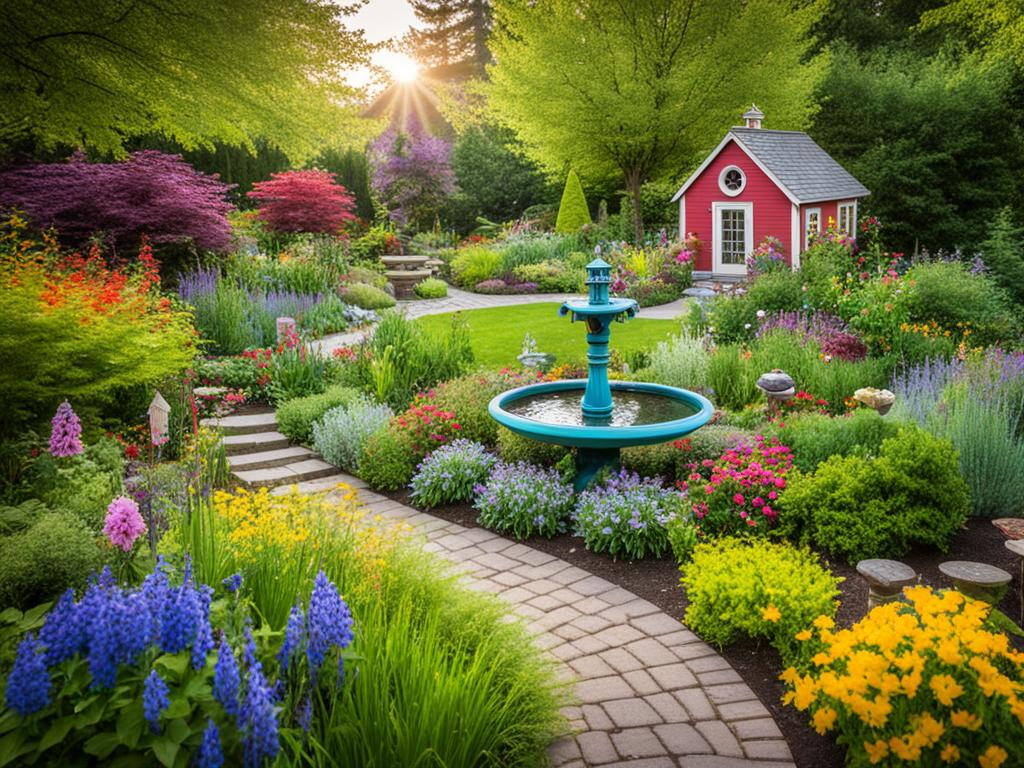
Raising Native Songbirds: A Step-by-Step Guide
When it comes to raising and releasing native songbirds, proper avian care is crucial. Whether you have stumbled upon an orphaned nestling or decided to take on the noble journey of fostering helpless hatchlings, this step-by-step guide will provide you with the essential information you need to ensure their well-being.
Feeding
One of the most critical aspects of avian care is providing appropriate nutrition to the young birds. Different species have different dietary requirements, so it’s essential to research and understand the specific needs of the bird you are raising. In general, a mixture of high-quality commercial bird feed formulated for songbirds and appropriate live food, such as mealworms or crickets, can be suitable for their diet. Remember to provide fresh water daily for hydration.
Handling
When handling native songbirds, it’s vital to minimize stress and ensure their safety. Always approach them gently and with clean hands to prevent the transmission of harmful bacteria. Use a soft cloth or gloves to handle the birds if necessary, ensuring a firm yet gentle grip. Avoid handling them excessively, as this can lead to stress and dependency on human contact.
Creating an Appropriate Environment
The birds you are raising will need a safe and comfortable environment to thrive. A spacious and secure cage or aviary will provide them with the necessary space to develop their muscles and practice flying. Ensure the enclosure is escape-proof and well-ventilated. Add natural perches, such as branches or twigs, to simulate their natural habitat and help the birds strengthen their feet. Don’t forget to include plenty of nesting material for their comfort.
“Creating a nurturing environment that replicates their natural habitat is crucial for the healthy development of native songbirds.” – Birdwatching Tips Magazine
Birdwatching Tips for Optimal Care
Observation plays a vital role in avian care. By keenly observing the behavior, feeding habits, and overall health of the birds, you can detect any signs of illness or distress and take appropriate action. Additionally, spending time watching the birds’ behavior will help you understand their natural instincts and behaviors better, allowing you to cater to their needs more effectively.
To enhance your birdwatching experience, invest in a pair of quality binoculars. This will allow you to observe the birds from a distance without causing any disturbance to their natural environment. Use the FWS Schoolyard Habitat Guide to identify common native bird species and gain insights into their behavior and habitat requirements.
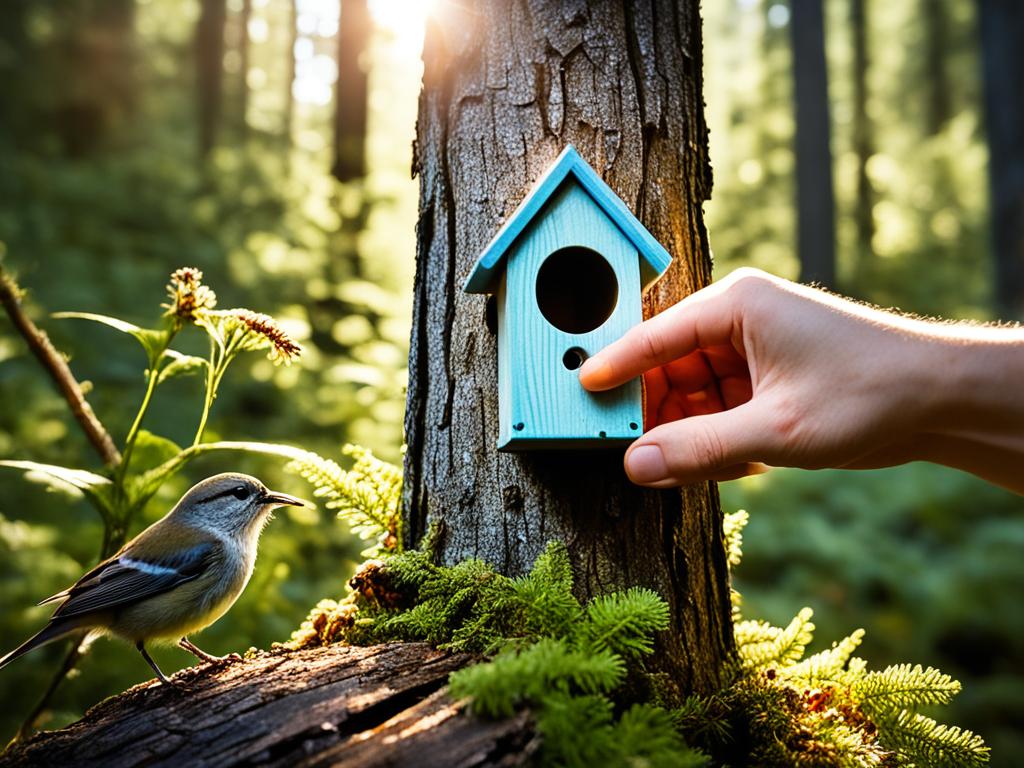
By following this step-by-step guide, you will be well-equipped to provide the necessary care for raising native songbirds. Remember, avian care requires patience, knowledge, and a deep respect for these delicate creatures. With your commitment, you are not only ensuring their well-being but also contributing to the preservation of these beautiful species.
Songbird Release Protocol: Setting Them Free
Releasing rehabilitated songbirds back into the wild is a pivotal moment in their journey of recovery. It’s crucial to follow a meticulous songbird release protocol to ensure their successful reintegration into their natural habitat. This protocol includes various important considerations such as timing, gradual acclimation, and post-release monitoring.
Timing plays a pivotal role in the songbird release protocol. It’s crucial to release the birds at an appropriate time when they have the best chance of survival. This typically coincides with the migration or breeding season when food sources are abundant, increasing their likelihood of finding sustenance and establishing themselves in their new environment.
Gradual acclimation is another essential aspect of the songbird release protocol. It involves providing a controlled and safe environment for the birds to adapt to their surroundings before setting them free. This can be achieved by using an outdoor aviary or pre-release enclosure where the birds can learn essential survival skills, such as foraging and flying, in a protected space.
Post-release monitoring is a critical step in ensuring the successful transition of rehabilitated songbirds. Caregivers and volunteers must regularly check on the released birds, observing their behavior, feeding habits, and overall well-being. This monitoring helps gather valuable data on the effectiveness of the rehabilitation process and enables necessary interventions if any issues arise.
| Songbird Release Protocol Checklist |
|---|
| Choose the appropriate timing for release |
| Provide a controlled environment for gradual acclimation |
| Regularly monitor the released birds post-release |
By adhering to the songbird release protocol, caregivers and wildlife rehabilitators contribute to the overall success of avian care and conservation efforts. Their dedication and expertise ensure that rehabilitated songbirds have the best chance of thriving in their natural habitat. To learn more about bird conservation and creating bird-friendly environments, refer to the FWS Schoolyard Habitat Guide.
Conclusion
Throughout this guide, we have explored the importance of bird conservation and the nurturing of native bird species. By engaging in activities such as backyard birding, wildlife rehabilitation, and habitat preservation, we can make a meaningful contribution to the well-being of our avian friends.
As you have learned, bird conservation is not just a responsibility, but a fulfilling experience that allows us to connect with nature and appreciate the beauty of our feathered companions. Each time we create a bird-friendly environment or release a rehabilitated songbird back into the wild, we are taking a step towards preserving the rich biodiversity of our planet.
To further deepen your knowledge of bird conservation, we encourage you to explore the Bird Conservation and Climate Change Scoping Report. This comprehensive document provides valuable insights and strategies for protecting native bird species in the face of environmental challenges.
Together, let us embrace the joy of nurturing nature and become stewards of our avian friends. By valuing bird conservation, we can ensure a harmonious coexistence between humans and the diverse world of birds, enriching our lives and safeguarding the natural heritage for generations to come.
